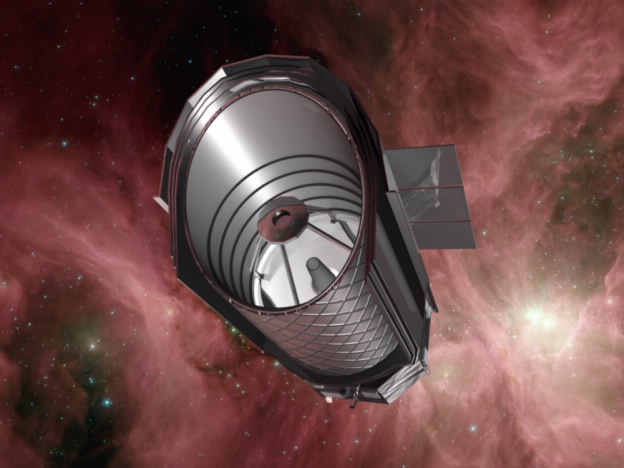Daily Image
12-04-2012Today's colloquium: The SAFARI Imaging Spectrometer for the SPICA space observatory.
| Submitter: | Colloquium |
| Description: | The Japanese SPace Infrared telescope for Cosmology and Astrophysics, SPICA, will provide astronomers with a long awaited new window on the universe. Having a large cold telescope cooled to only 6K above absolute zero, SPICA will provide a unique environment where instruments are limited only by the cosmic background itself. A consortium of European and Canadian institutes has been established to design and implement an imaging spectrometer, the SpicA FAR infrared Instrument SAFARI. SAFARI will use the extremely sensitive Transition Edge Sensors (TES) to fully exploit the very low far infrared background environment provided by the SPICA observatory. The instrument employs an imaging Fourier Transform Spectrometer (FTS) to provide continuous coverage in photometry and spectroscopy from 34 to 210 μm, with a field of view of 2'×2' and various spectral resolution modes up to R = 2000 (at 100 μm). Additionally the instrument can operate in a photometric mode in which the FTS is fixed at one end of its stroke. To cover the full 34 to 210 μm wavelength range the SAFARI detector system utilizes three large-format detector arrays. The detector system elements are divided over the following main units: 3 “Focal Plane Arrays”, each containing one detector array, its multiplexed SQUID amplifier readout electronics, and shielding and filtering needed to operate these components within the SPICA environment, a 136 K Low-Noise Amplifier that amplifies the weak outputs from the cryogenic electronics, and the Detector Control Unit (DCU) containing control and readout electronics both at room temperature. SAFARI’s large instantaneous field of view combined with the extremely sensitive TES detectors will allow astronomers to very efficiently map large areas of the sky in the far infrared – in a square degree survey within a 1000 hours many thousands of faint sources will be detected. A large fraction of these sources will be fully spectroscopically characterised by the instrument. Efficiently obtaining such a large number of complete spectra will be essential to address several fundamental questions in current astrophysics: how do galaxies form and evolve over cosmic time?, what is the true nature of our own Milky Way?, and why and where do planets like those in our own solar system come into being? |
| Copyright: | P. Roelfsema (SRON Netherlands Institute for Space Research, Groningen, The Netherlands, Kapteyn Astronomical Institute, Groningen, The Netherlands) |
| Tweet |  |
